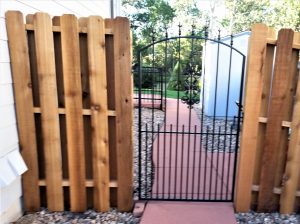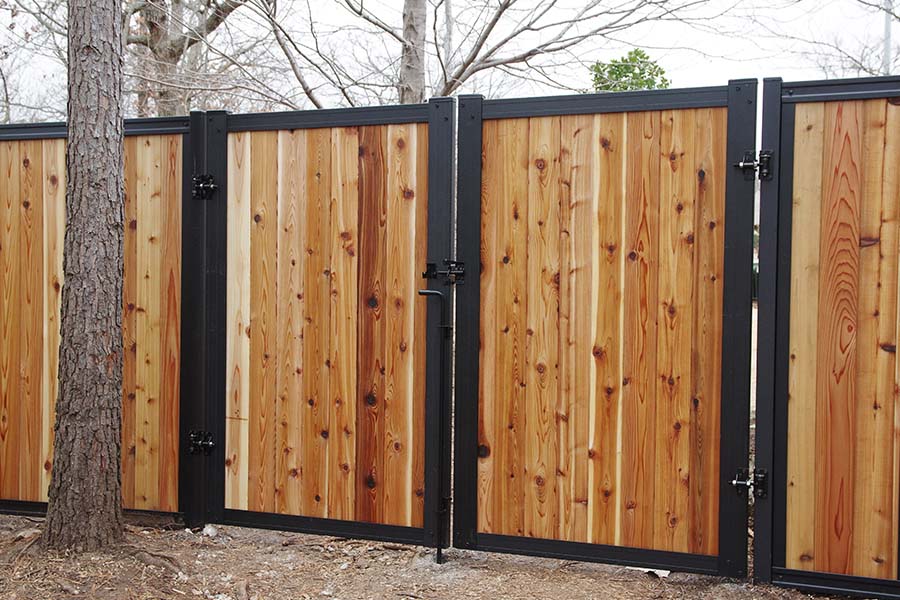All Categories
Featured
Whether it's strong winds, hefty rainfall, or extreme warmth, weather condition can create substantial damage to your fence, leading to expensive repair work or even a complete replacement. Below are some practical pointers to secure your fence from weather-related damages.
Plastic Secure Fencing: Vinyl is very long lasting and resistant to dampness, decomposing, and bending. It additionally calls for little maintenance and can stand up to rough weather conditions without fading or fracturing. Steel Fencing: Wrought iron or aluminum fences are resilient and strong against wind and rain. However, they are susceptible to corrosion over time otherwise properly protected. Applying a rust-resistant layer can assist preserve their appearance and honesty. Composite Fencing: Made from a mix of wood fibers and plastic, composite fences integrate the most effective top qualities of both materials. They're immune to degeneration, rot, and insect damages while offering the appearance of natural timber. By picking the ideal material, you can make sure that your fencing is better equipped to stand up to the elements.
Dampness Defense: Sealants create a waterproof obstacle, stopping rainfall from leaking right into the wood and causing rot or mildew. UV Protection: Stains and sealers block UV rays, which can dry and blemish the wood. Maintain Look: Regularly using a protective coating will keep the fence's all-natural beauty and stop staining or fading. To make certain resilient protection, reapply sealer or stain every one to 2 years, relying on your climate and fence wear.
![]()
![]()
In addition, cleansing your fencing can assist remove dirt, mold, and debris that can trigger lasting damage. For wooden fences, carefully pressure clean the surface area to get rid of gunk, while plastic fencings can be cleaned with a light detergent remedy.
Conclusion. Your fence is a beneficial investment that provides visual, protection, and personal privacy interest your building. By taking proactive actions to secure it from weather-related damages, you can ensure its long life and maintain its functionality. Whether you're choosing the appropriate products, applying safety layers, or reinforcing blog posts, these easy approaches can assist shield your fence from the aspects, conserving you cash and extending the life-span of your fencing for years ahead. Routine examinations and upkeep are vital to capturing concerns early, so make certain to stay on top of your fencing's treatment throughout the periods.
- Choose Weather-Resistant Materials. Among the first steps in protecting your fencing from weather-related damage is choosing the ideal material. Some products are naturally a lot more immune to the elements, reducing the requirement for consistent repair work. :
Plastic Secure Fencing: Vinyl is very long lasting and resistant to dampness, decomposing, and bending. It additionally calls for little maintenance and can stand up to rough weather conditions without fading or fracturing. Steel Fencing: Wrought iron or aluminum fences are resilient and strong against wind and rain. However, they are susceptible to corrosion over time otherwise properly protected. Applying a rust-resistant layer can assist preserve their appearance and honesty. Composite Fencing: Made from a mix of wood fibers and plastic, composite fences integrate the most effective top qualities of both materials. They're immune to degeneration, rot, and insect damages while offering the appearance of natural timber. By picking the ideal material, you can make sure that your fencing is better equipped to stand up to the elements.
- Protect Wood Fencings with Discolorations and sealants. Wooden fencings are particularly prone to dampness, UV rays, and extreme temperatures. In time, these elements can bring about decomposing, bending, and fading. To secure your wood fencing from these issues, applying a premium timber sealant or tarnish is important. Below's how this helps:
Dampness Defense: Sealants create a waterproof obstacle, stopping rainfall from leaking right into the wood and causing rot or mildew. UV Protection: Stains and sealers block UV rays, which can dry and blemish the wood. Maintain Look: Regularly using a protective coating will keep the fence's all-natural beauty and stop staining or fading. To make certain resilient protection, reapply sealer or stain every one to 2 years, relying on your climate and fence wear.

- Strengthen the Fencing Posts. To stop this, consider strengthening your fencing messages by setting up concrete grounds or making use of more powerful materials for article anchors. If you live in a location with hefty winds or seasonal frost, this included security will help secure your fence from damages.
- Trim Surrounding Plants. Tree branches and creeping plants growing near or over your fence can cause considerable damage in rainy climate. Solid winds or heavy snow can trigger branches to damage, dropping onto your fencing and damaging panels or harmful posts. Frequently cut any looming branches or creeping vines to avoid them from creating problems. Not only will this shield your fence, however it will certainly also boost the overall appearance of your lawn.
- Usage Windbreaks. Wind is a major variable in weather-related fencing damage. A windbreak acts as a barrier that decreases the straight impact of wind on the fence, protecting against damages from high winds and gusts.

- Address Drain Issues. Poor drainage is a significant factor to fence damages, especially for wood fences. Water that collects around the base of fencing messages can cause them to rot over time.
- Routine Inspections and Upkeep. Routine upkeep is essential for shielding your fencing from weather damage. Evaluate your fence regularly, specifically after severe weather condition occasions, to determine any kind of signs of damages.
In addition, cleansing your fencing can assist remove dirt, mold, and debris that can trigger lasting damage. For wooden fences, carefully pressure clean the surface area to get rid of gunk, while plastic fencings can be cleaned with a light detergent remedy.
- Apply a Rust-Resistant Layer to Metal Fences. Steel fences, especially those made of iron or steel, are prone to rust when exposed to wetness and moisture. To secure your metal fencing from corrosion, apply a rust-resistant layer or paint.
Conclusion. Your fence is a beneficial investment that provides visual, protection, and personal privacy interest your building. By taking proactive actions to secure it from weather-related damages, you can ensure its long life and maintain its functionality. Whether you're choosing the appropriate products, applying safety layers, or reinforcing blog posts, these easy approaches can assist shield your fence from the aspects, conserving you cash and extending the life-span of your fencing for years ahead. Routine examinations and upkeep are vital to capturing concerns early, so make certain to stay on top of your fencing's treatment throughout the periods.
Latest Posts
Transform Your Home with Quality Flooring Solutions
Published Apr 20, 25
1 min read
Benefits of NAPA AutoCare? Montclare Auto Repair Breaks It Down
Published Apr 20, 25
2 min read
Empowering Youth with WyHy's Financial Devices
Published Apr 20, 25
1 min read